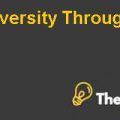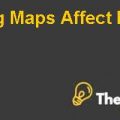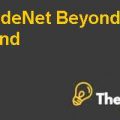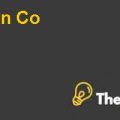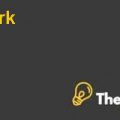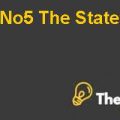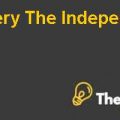
Synopsis of the Situation
The paper is dealing with the situation of how the IBM Company changed its structure in order to bring innovative products and be able to manage its new businessessuccessfully. In particular, IBM shifted from a bureaucratic structure of the inflexible hierarchy or a divisional structure that allowed the company to follow emerging business opportunities and also making it able to continue in developing businesses that were mature and well established at the same time, and business was goingto rise and were having a rapid growth.
Key Issues:
- Bring Innovation
- Adoption of change
- Increase the growth
- Adoption of inflexible hierarchy
Problem Statement:
As a line extension of IBM, Emerging Business Opportunity system has a responsibility to discover new business areas forinnovation and growth, cost-effectively. However, concerns were arousedby doubts of experienced managers and employees because of huge risks, and few availability of the resources.
Innovation Process:
“The innovation process is the main process in an organization related to new and refreshing offers, and how the company is going to create and delivers that offering.”
So in order to go towards innovation it is recommended that organizations have to go through five phases, making up the innovation process for introducing fundamental pushed high-tech innovations to the market. These were scanned, strategy, resourcing, implementation and learning, as presented in Exhibit 1.
Scanning:
The first phase of the innovation processin which firms need to scan and search for the internal and external environment factors to grab a chance for innovation. There are various needs and opportunities that come up through research activities. It is also important to judge the pressures to obey legislation or the behavior of competitors.
Strategy Phase:
The second phase is the strategy phase, which deals with strategically selecting, from this set of potential causes for innovation, and of those things which the organization will commit recourses to do. Accepting the fact that even the best resourced organization cannot do everything, so the challenge lies in selecting those things which give the best chance of emerging with a competitive edge.
Resourcing:
The third phase is resourcing, whichdeals with the resources of the company respectively. This can be done either by making it through Research and development or either by acquiring it through technology transfer. Hence,this might be aneasy as it is in the form to use or abusing the already done research or it might require wide-ranging search to find the right resources.
Implementation:
The fourth phase is the implementationwhich deals with implementing the innovation, risingfrom an idea, fromseveral stages of development to the final launch. In the process of an emerging business opportunity this is the role of IBMNL.
Learning:
Thefifth phase is learning. In order to learn how to manage the process better, and to getrelated knowledge from experience.
Transforming into Divisions
IBM shares both kinds of systems;an informal and aformal company as its management is very strict. IBM made a difference between three business horizons. There is a special measurement systems for all three horizons a business have, no irrationalexpectations, and room to develop. Successful businesses move from horizon to 3 to 2 to 1 and become business standard.
- Horizon 1 or (H1) businesses were mature and well developed and accounted for the bulk of cash flows and profit.
- Horizon 2 or (H2) businesses were on the rise and expanding rapidly, and we'reaccelerating the growth.
- Horizon 3 or (H3) businesses were still developing and emerging and they were the seeds of the company’s future.
Emerging Business Opportunity at IBM:
An internal analysis of the company revealed six major reasons that, IBM missed new technology and market opportunities. These involved:
- The current management system rewards performancefocusedontemporary results and does not value strategic business development. TheLeading leadership style rewarded within the business was to implementperfectly onexisting opportunities instantaneously.Breakthrough thinking was not anappreciated leadership capability.
- The company is worried with current markets and existing market offerings.Processes were designed to listen closely to existing customers and to give attention on traditional markets. This was making IBM slow to identifytechnological disordersand to identify new markets.
- The business model stresseson sustained profit and EPS enhancement rather than actions oriented towards higher price or earnings. The emphasis was on to improve profitability of a constant reality of businesses rather than speeding up theinnovation.
The company’s approach of collecting and.............
This is just a sample partial case solution. Please place the order on the website to order your own originally done case solution.
By June 2003, IBM has made significant progress in changing how it is controlled by new, emerging businesses. Describes the development of a separate program management at IBM, to identify, collect, and shepherd through the growth of new business. Traces the history of the program, its evolution and the challenge of the senior management person in the expansion program. "Hide
by David Garvin, Lynne C. Levesque Source: Harvard Business School 20 pages. Publication Date: March 15, 2004. Prod. #: 304075-PDF-ENG

